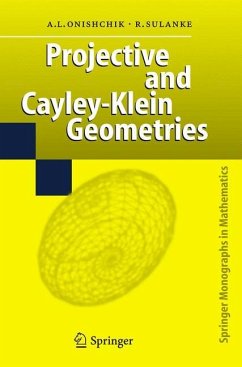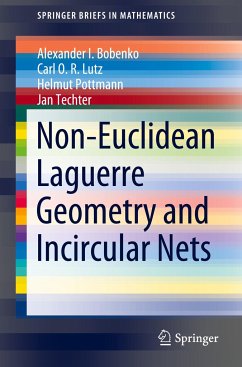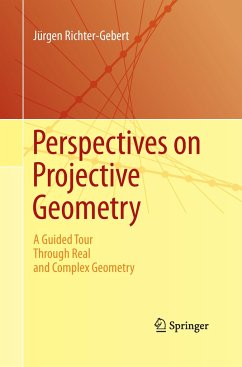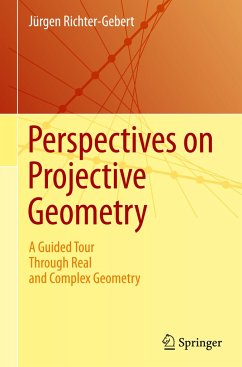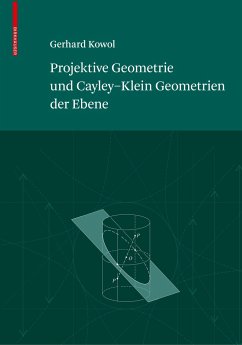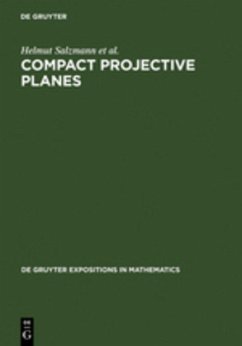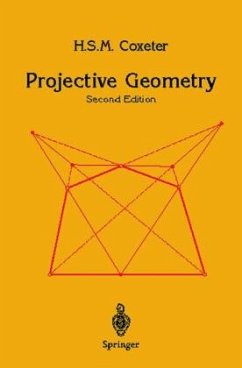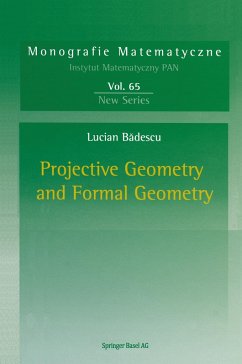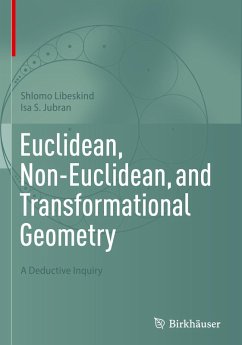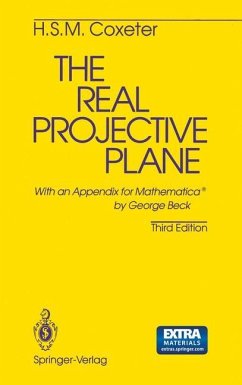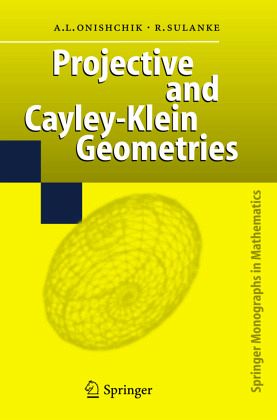
Projective and Cayley-Klein Geometries
Versandkostenfrei!
Versandfertig in 6-10 Tagen
76,99 €
inkl. MwSt.
Weitere Ausgaben:

PAYBACK Punkte
38 °P sammeln!
Projective geometry, and the Cayley-Klein geometries embedded into it, were originated in the 19th century. It is one of the foundations of algebraic geometry and has many applications to differential geometry.The book presents a systematic introduction to projective geometry as based on the notion of vector space, which is the central topic of the first chapter. The second chapter covers the most important classical geometries which are systematically developed following the principle founded by Cayley and Klein, which rely on distinguishing an absolute and then studying the resulting invaria...
Projective geometry, and the Cayley-Klein geometries embedded into it, were originated in the 19th century. It is one of the foundations of algebraic geometry and has many applications to differential geometry.
The book presents a systematic introduction to projective geometry as based on the notion of vector space, which is the central topic of the first chapter. The second chapter covers the most important classical geometries which are systematically developed following the principle founded by Cayley and Klein, which rely on distinguishing an absolute and then studying the resulting invariants of geometric objects.
An appendix collects brief accounts of some fundamental notions from algebra and topology with corresponding references to the literature.
This self-contained introduction is a must for students, lecturers and researchers interested in projective geometry.
The book presents a systematic introduction to projective geometry as based on the notion of vector space, which is the central topic of the first chapter. The second chapter covers the most important classical geometries which are systematically developed following the principle founded by Cayley and Klein, which rely on distinguishing an absolute and then studying the resulting invariants of geometric objects.
An appendix collects brief accounts of some fundamental notions from algebra and topology with corresponding references to the literature.
This self-contained introduction is a must for students, lecturers and researchers interested in projective geometry.




